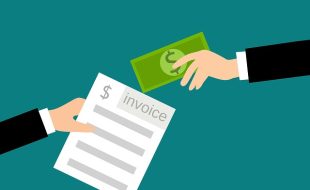Table Of Contents
Everything You Should Know About BRC-20 Tokens On Bitcoin
Last Updated on: November 16th, 2024
Is 2023 the year of Bitcoin ordinals, also known as digital artifacts? Just a few months ago, we saw how Bitcoin NFTs like SpacePepe and Bitcoin Frogs kicked up a vicious debate within the community. Many users expected this NFT fad to pass eventually. But it didn’t!
Ordinals And Their Effects
Thanks to the ordinals, it seems that the reign of Bitcoin is stronger than ever. The number of Bitcoin NFTs continues to climb. And the might of ordinals was so strong that it even spread to its cousin networks, Litecoin and Doge, unleashing a frenzy of activities on them for weeks.
And now, BRC-20 tokens are the hottest new things in the crypto town, which have accounted for more than 40% of all Bitcoin transactions in the last couple of months. You heard that right! Even tokens are now available on Bitcoin, too.
How Do Bitcoin Inscriptions Work?
Before we peel back the onions on BRC-20, we need to understand how Bitcoin inscriptions work.
As you already know, the Bitcoin blockchain functions like a public ledger that records all the transactions made on the network. You can think of a blockchain as a long chain of connected blocks, with each block containing a list of transactions. Each transaction is like a digital receipt showing who sent Bitcoin to whom and how many ordinals assigned a unique number, or index, to each of these transactions based on the order they were included in the block. Just like the page numbers in a book. This way, any user can refer to a specific transaction by its ordinal number and easily locate it within the blockchain.
Inscription here is made possible by Bitcoin ordinals, which refer to adding data like love letters, silly images, funny videos, or any other file format you can think of to a Satoshi.
What’s BRC-20?
Earlier this year, one enigmatic developer started wondering – what if we inscribed JSON to Satoshis? Is it actually possible for us to create a fungible token standard for Bitcoin then?
Over time, brainstorming yielded viable theories, theories turned into experiments, which, in turn, shaped into something more tangible and finally gave birth to BRC-20. By attaching JSON to Satoshis, we can now define every characteristic of BRC-20 tokens like minting and supply using codes.
Where Can You Get BRC-20?
Now that you know so much about the tokens in question, you might be wondering how to actually put your hand on them.
The fastest and easiest way would be to buy BRC-20 from centralized exchanges like Gate.io or OKX. Decentralized exchanges like UniSat are also at your service.
You can also obtain the coveted tokens directly from the Ordinals exchange. For this, go to ordinalswallet.com and create a wallet for your assets. Here, you can also mint and trade Bitcoin tokens and NFTs.
- Useful advice. Though web-based crypto wallets remain a convenient and easy-to-use storage option for your crypto, consider using cold storage for added security. With the best cold wallet 2023, you can ensure your tokens are safe and intact.
Advantages And Disadvantages
On the positive side, BRC-20 tokens can offer several upsides including fungibility, added security, and compatibility within the Bitcoin network. However, it’s important to note that BRC-20 doesn’t offer EVM compatibility, meaning developers may face limitations in accessing certain resources and building on the network. This downside can potentially result in a smaller ecosystem and limited adoption as compared to other networks.
That said, thanks to ORDI, miners got a chance to earn more now due to the increase in network activities. Bitcoin adoption is rising, but the flip side of this also means more stress to the Bitcoin blockchain and higher gas fees.
Regardless of where you stand when it comes to ordinals, you can marvel at crypto’s continuous innovation. So, is this a fad that is destined to pass soon? Or will Bitcoin DeFi and NFTs truly pose a challenge in the Ethereum domain? Well, this remains to be seen.
Read Also:














